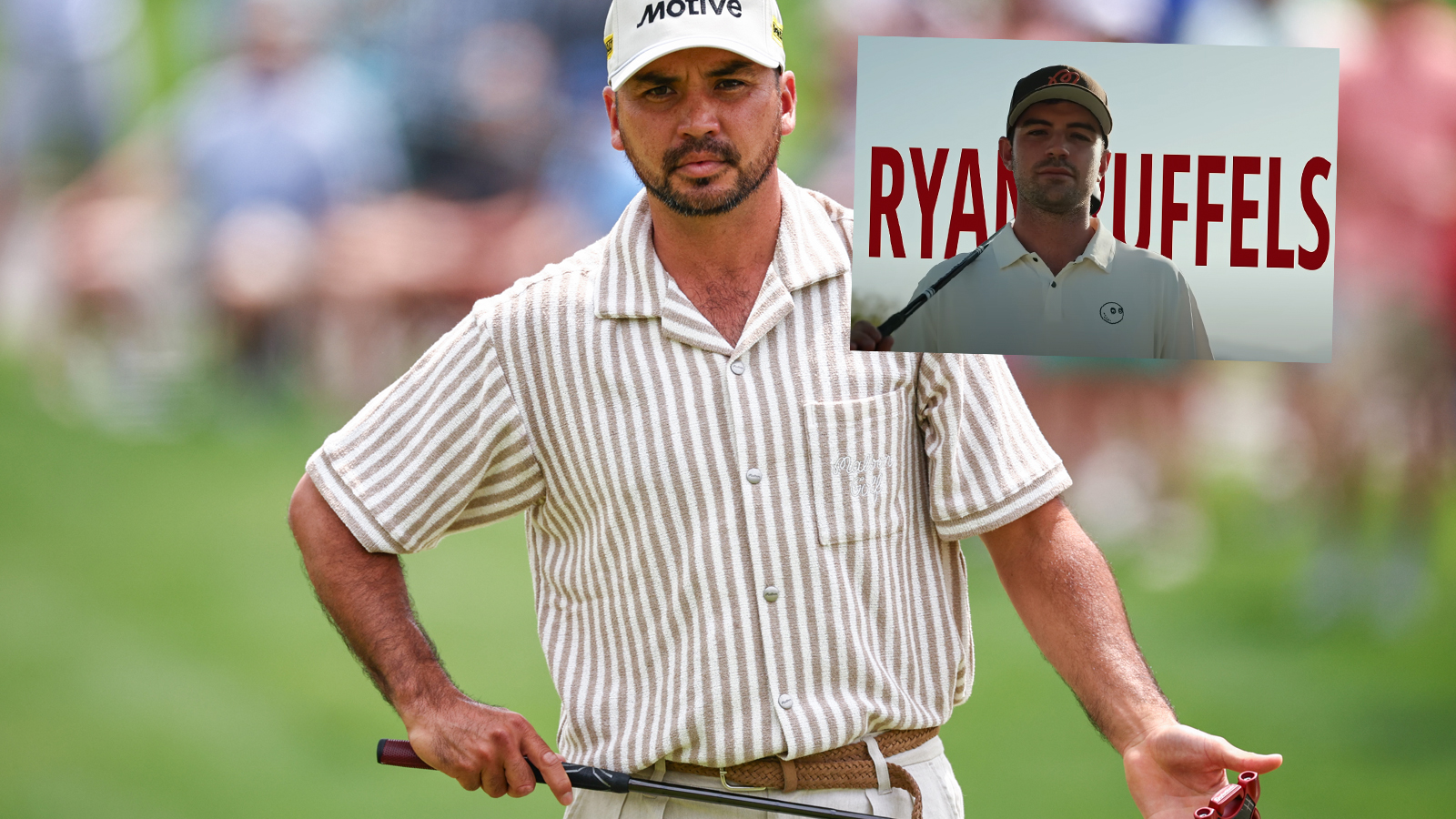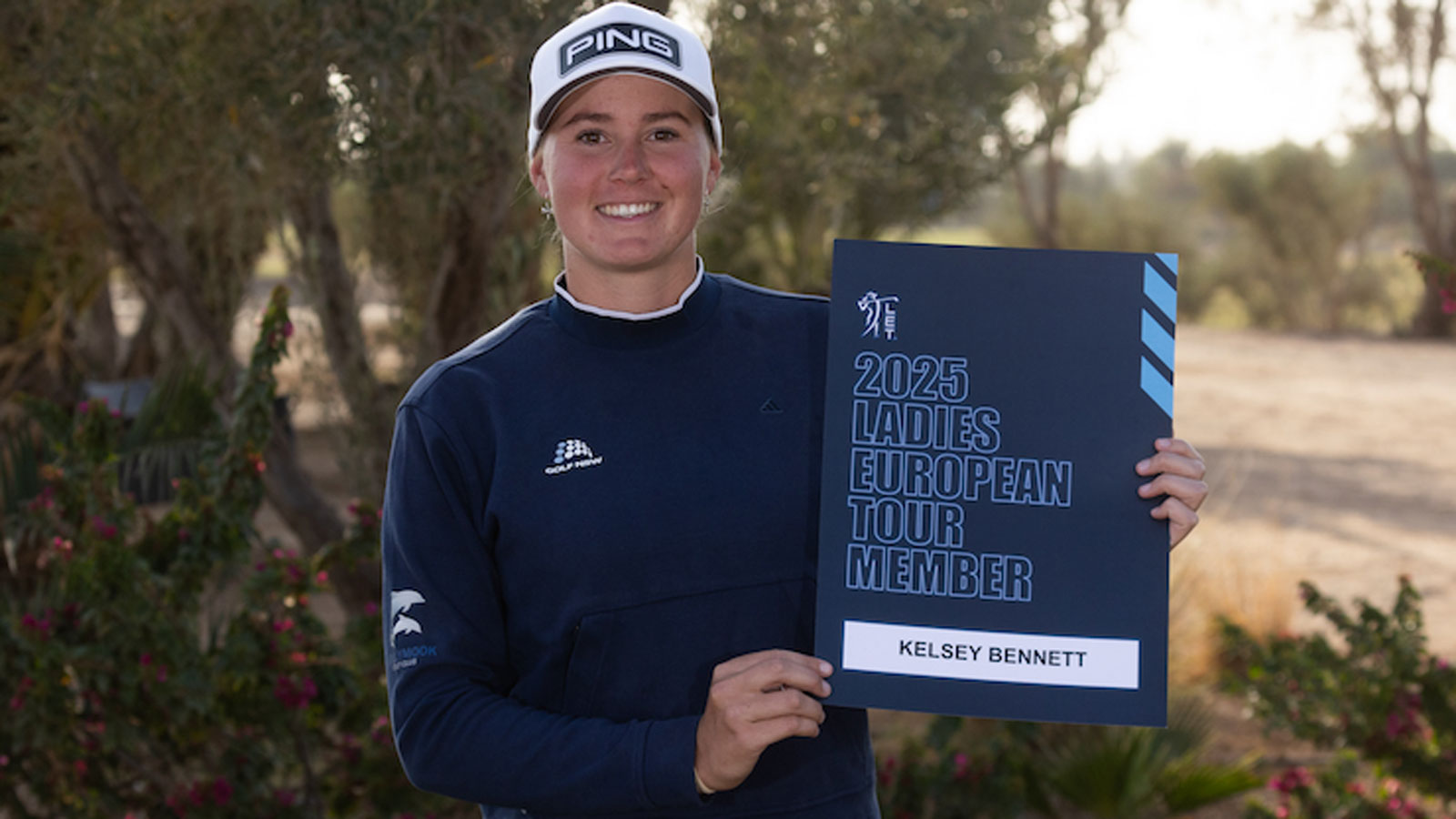In Pursuit Of Links Golf – Australian Golf Digest

- by Admin
- May 28, 2024

In the ongoing search for sand, we find the ancestral spirit of the game. These are must-play links courses on both sides of the Tasman.
Debate surrounding the best golf courses in Australia tends to favour those layouts with links-like qualities. Hard, fast, bouncy and true. Certainly, Australia’s fascination with links golf stems partly from the fact the Open Championship accounts for 10 of the nation’s 18 men’s major triumphs.
Five of those belong to Peter Thomson who subdued the Americans on what he called neutral ground – the bouncy links courses of Britain. Local folklore has it that Thomson would prepare at Flinders Golf Club on Victoria’s Mornington Peninsula prior to departing for what was dubbed by
Mike Wolveridge as ‘The annual slaying of the lambs’.
Kel Nagle pipped Arnold Palmer to win the centenary Open in 1960. Greg Norman produced two of the finest rounds in major-championship history during his triumphs at Turnberry (1986) and Royal St George’s (1993). Ian Baker-Finch tore apart Royal Birkdale over the weekend to claim the 1991 title. And who can forget Cam Smith’s sublime back-nine finish to thwart Rory McIlroy at the 2022 Open?
For a comprehensive insight into our record, Aussies At The Open details our tales and triumphs. The book’s authors, Tony Webeck and Steve Keipert, have listed every Australian who competed in the first 150 years of the world’s oldest major championship.
Yet for the majority of last century, the local trend in golf-course architecture had steered towards treelined parkland layouts. Club presidents, captains and committees became preoccupied with beautifying golf courses with the planting of trees and lush vegetation.
It was in stark contrast to Australia’s golden age of course architecture from the 1920s during which Alister MacKenzie influenced the design of clubs in Victoria, New South Wales, South Australia and New Zealand’s North Island.
Three significant developments could be attributed to ushering in an exciting new era of golf-course design about the turn of the century: the renaissance of links golf.
Firstly, Norman’s assaults on The Open captured the imagination of Australian golfers. His flamboyant style and daring shot-making on the links of Britain were vividly brought to life on television screens across Australia.
The second of Norman’s Open conquests in 1993 coincided with the opening of Links Hope Island. Rarely has an Australian golf venue attracted the hype achieved by Hope Island [feature image]. Boasting the imprimatur of five-time Open champion Thomson, Hope Island featured the rounded, pot-shaped bunkers synonymous with the great links courses of Britain. Thomson even paid homage to the idiosyncrasies of links golf: a pot bunker or two in the middle of a fairway.
The concept was a fascinating dichotomy: a links-style layout in a humid subtropical climate amid the waterfront canal living of the northern Gold Coast, the home to the white-shoe brigade of flamboyant property developers.
Links Hope Island had a magnetic appeal with golfers, especially those from southern Australia during the winter months when mean daily maximum temperatures on the Gold Coast hovered near 21-22 degrees.
Now ranked No.51 on Australia’s Top 100 Golf Courses, the Hope Island resort has since been rebranded Links Golf & Wellbeing to acknowledge how it is much more than a golf destination. Facilities include a contemporary day spa, fine dining, conference facilities and tranquil lakeside settings for hosting weddings.
The third and most influential factor in the links golf renaissance was Tony Cashmore’s redesign of The Dunes Golf Links on Victoria’s Mornington Peninsula in 1997. It spawned a plethora of links courses on the Mornington and Bellarine peninsulas during the next quarter of a century. Meanwhile, leading clubs on the Melbourne Sandbelt embarked upon renovation work, seeking architects who were capable of restoring the linksy elements of the original design (Yarra Yarra Golf Club, Woodlands Golf Club, Commonwealth Golf Club).
EMBRACING LINKS GOLF
Elsewhere, the links-inspired layout at Pullman Magenta Shores Resort on the NSW Central Coast is a remarkable achievement, partially transformed from a former rubbish tip into a superb golf experience rated 35th on the Top 100.
On a relatively flat site, course architect Ross Watson threaded playing corridors through artificial sand dunes on a narrow isthmus of land north of The Entrance, just 90 minutes from Sydney’s CBD and 45 minutes from the Hunter Valley. Fast-running couch fairways, deep bunkers and fescue rough enhance its linksy character.
With 2.3 kilometres of beach frontage, tropical outdoor lagoon pools and the luxurious Vie Spa, the 5-star Pullman resort is NSW’s most lavish seaside golf resort. Hotel guests and residents at Magenta Shore have access to all the resort’s facilities.
The Tuncurry course at Forster Tuncurry Golf Club on NSW’s Mid North Coast fits the classic description of a links – a strip of sandy terrain from which the sea has receded to form a rolling piece of land conducive to the game. While native bushland obscures the immediate foreshore, most holes at Tuncurry are in such proximity to the water that the sound of crashing waves are a constant reminder of the vast Tasman Sea.
Professional-turned-course architect Craig Parry is responsible for ongoing work on the original layout designed by Kel Nagle and Mike Cooper and shaped by volunteer members (1984). Much attention has focused upon reducing the amount of overgrown vegetation (banksia and tee tree), which had been allowed to flourish and restrict the width of playing corridors. It’s a vast improvement to the 6,209-metre, par-72 layout, reflected by the fact it has re-entered Australia’s Top 100 at No.97.
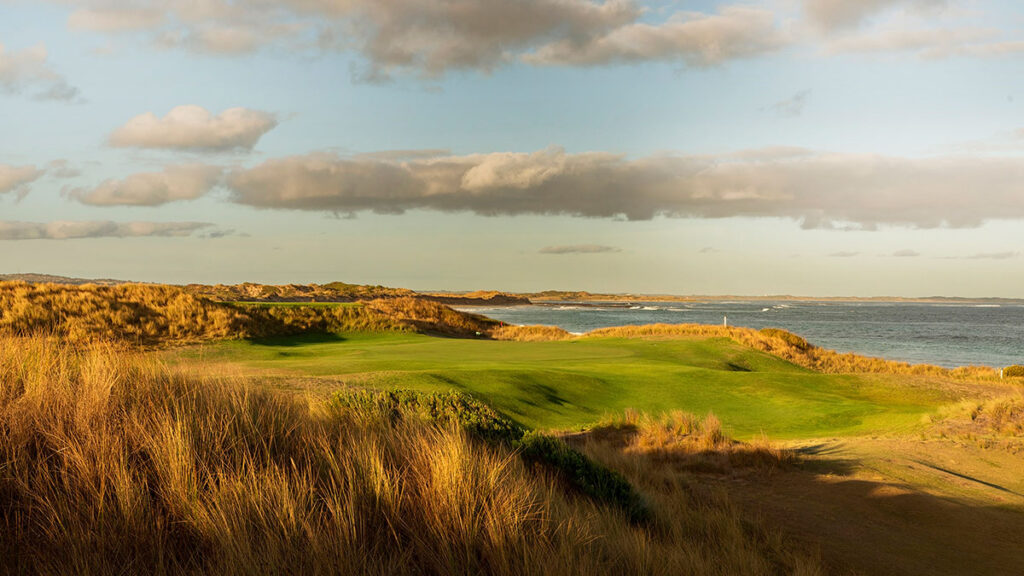
REMOTE LINKS COURSES
Making the 290-kilometre trek west from Melbourne via the Great Ocean Road is a small inconvenience in order to play Port Fairy Golf Links on Victoria’s Shipwreck Coast. This hidden gem has achieved somewhat of a cult following after a 2007 renovation that now sees it ranked at a career-best No.50 on Australia’s Top 100.
Originally laid out by club members in the early 1960s, Port Fairy had the foresight to engage the team of Michael Clayton, Bruce Grant and John Sloan to enhance the links experience. It’s a terrific blend of holes through unspoilt sand dunes that Mother Nature gifted this enchanting part of the world. Although relatively short in length at 5,887 metres for a par 72, Port Fairy’s challenge is compounded by exposure to ever-present winds off the ocean.
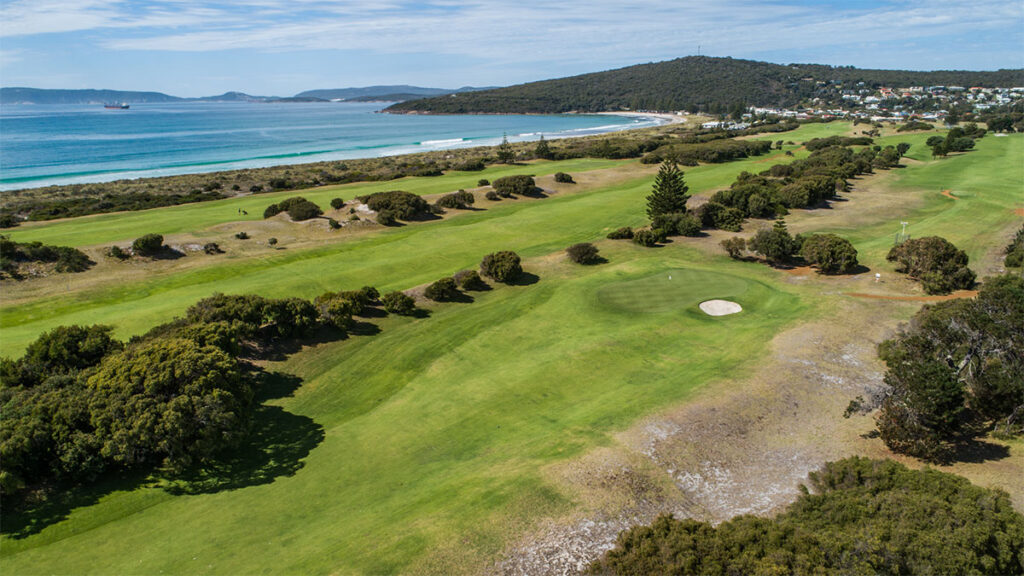
The most remote golf course you’ve never been to is surely Albany Golf Club in the Great Southern region of Western Australia. It’s a 405-kilometre journey south-east of Perth – the world’s most remote capital city – however a longer scenic route affords an opportunity to discover red tingle forests, ancient Karri trees and the ‘Valley Of The Giants Tree Top Walk’ near Walpole.
Albany is thoroughly quirky with several raised ‘hogs-back’ kikuyu fairways and the squarish, flat greens with steep runoffs. William Henry Angove is credited with designing WA’s oldest course located on its original site (1898). The routing of the 6,068-metre, par-72 layout changed in 2001 after the opening of a contemporary clubhouse.
Now ranked No.99 on Australia’s Top 100, the panoramic views from Albany’s highest vantage points are breathtaking – especially so if you’re lucky enough to catch Southern Right whales breaching as close as 100 metres offshore in the waters of King George Sound.
ACROSS THE DITCH
The magnificent Tara Iti at Mangawhai on New Zealand’s North Island became an instant bucket-list course when it opened in 2015. The windswept links on a former pine plantation, about 100 kilometres north of Auckland, might just be the greatest accomplishment by revered American architect Tom Doak, who took advantage of the mesmerising scenery of Hauraki Gulf. While the exclusive Tara Iti is members-only and their guests, visitors can experience the Doak layout by applying for a ‘once-in-a-lifetime’ pass on the club’s website to play and stay at the property.
The success of Tara Iti was the catalyst for Te Arai Links, which boasts two pure-links courses on the beach just beyond its neighbour. Bill Coore constructed the first 18 in natural sand dunes where 16 holes feature ocean views, while eight holes have direct ocean frontage.
Doak’s Renaissance Golf Design added a second course at Te Arai, which opened last October. The North course is routed inland with seven of the 18 holes featuring ocean views. The green fee for Australians to play either course ranges between $NZ300 and $NZ425, depending on the season. One of the two courses is open to the public each day on an alternating basis.
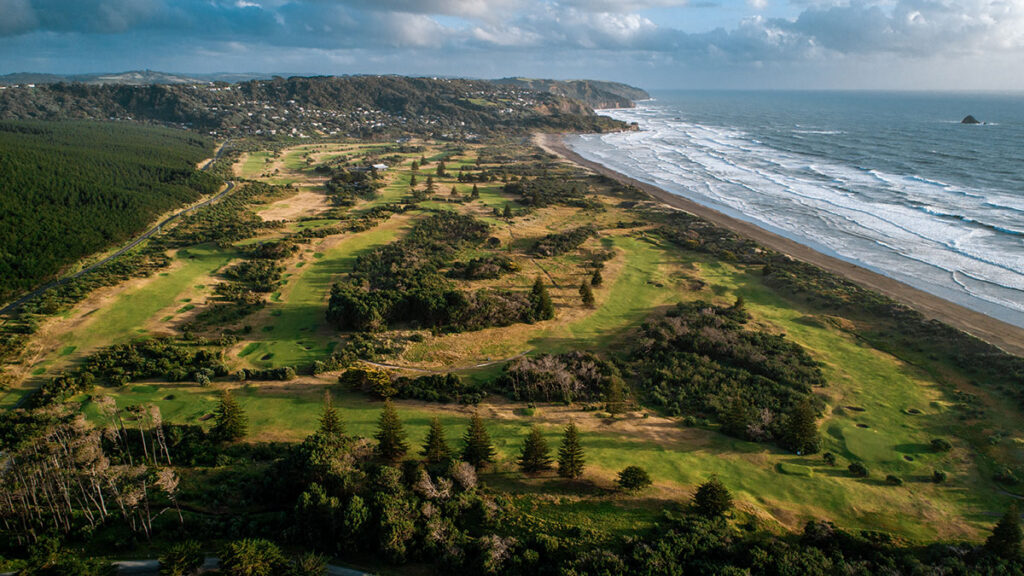
For a fraction of the price, Muriwai Golf Links on the Auckland region’s rugged west coast offers superb value with a green fee of $NZ150 (for non-New Zealand affiliated golfers). Known for its black-sand surf beach emanating from the rich volcanic soil, Muriwai features the humps, swales and pot bunkers synonymous with links golf.
While not a classic links in the purist sense because of its kikuyu fairways, the turf maintenance is such that it plays with the hard, bouncy feel of a true links. Just 42 kilometres north-west of the Auckland city centre, Muriwai’s greatest virtue is an all-year playability due to the fast-draining nature of the sandy property. Away from the course, the local gannet colony draws visitors from afar. Piha Beach, horse riding and zip-lining are alternative tourist attractions.
The Latest News
-
December 24, 2024‘Novak Djokovic will only care about the Australian Open and Wimbledon’
-
December 24, 2024PNG-Australia NRL Deal: K1.7 billion economic boost and 10,300 jobs expected
-
December 24, 2024Christmas Day Tennis: 5 times Australian Open was held over December 25th
-
December 24, 2024Australian football team set to play Nantwich during UK tour
-
December 24, 2024Australian teenager to become youngest Test batting debutant in 71 years

